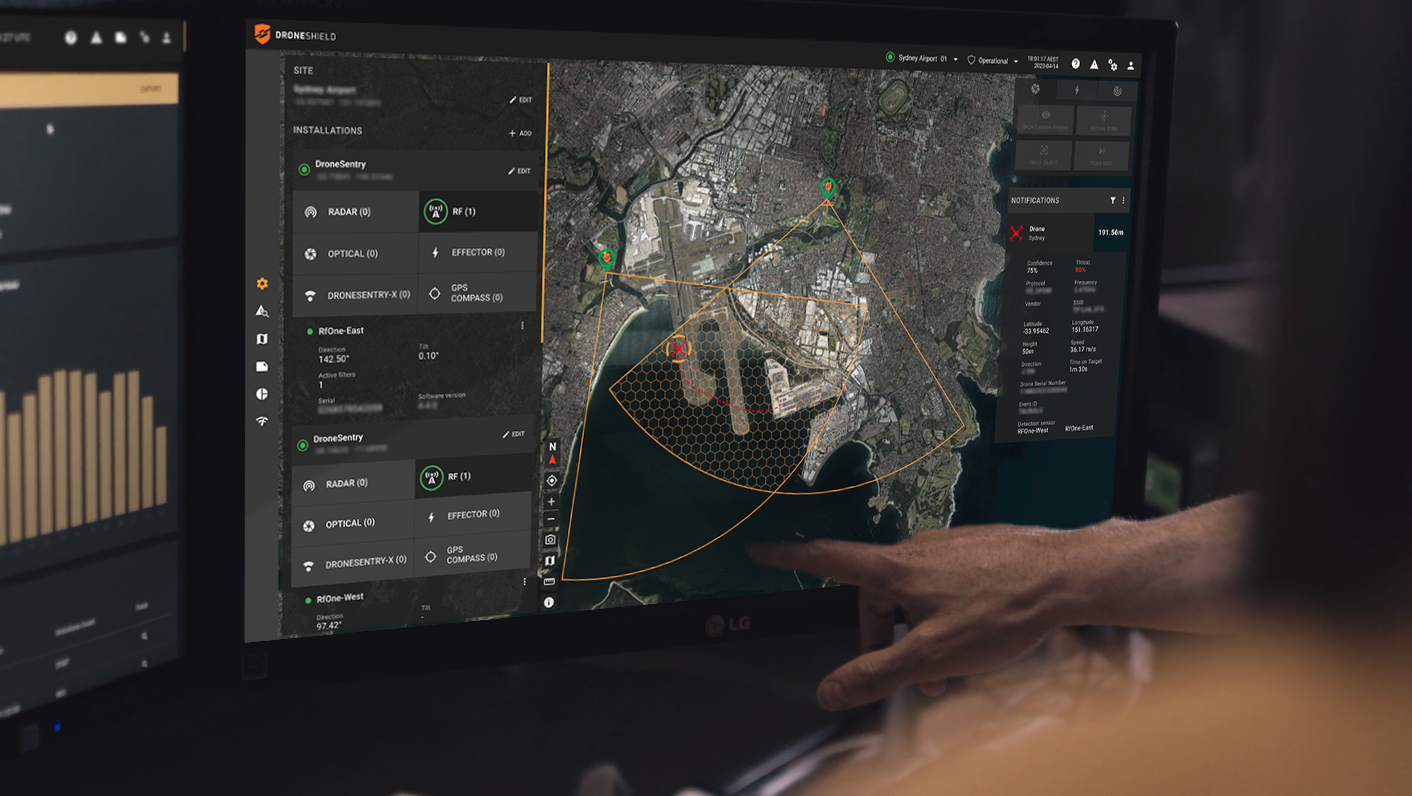SensorFusionAI: Shaping the Future of Defence Strategy
This article originally appeared in DroneShield's Counter-Drone Policy and Tech Review Advertising Feature in The Australian (ACT circulation only) on 22 July 2025, and has been edited for clarity and length.
Written by Angus Bean, Chief Product and Technology Officer at DroneShield.
In just a few years, drones have not only reshaped the battlefield, but introduced vast threats to civilian safety and national security.
Recent developments globally have demonstrated the increasing reliance on drones, including the expanding number of AI-powered units, in conflicts. From the beginning of the war in Ukraine, AI-enhanced drones have proven to hit their targets more accurately than human-piloted drones. These semi-autonomous drones are currently used for final-approach navigation, improving their success rate by up to 80 per cent.
Imagine a drone flying near a military airport. It could be harmless, or it could be carrying explosives. In a world where seconds can mean lives lost, it is no longer about guesswork. AI threat detection in defence ensures that we can think, adapt, and make informed decisions, fast.
As the threat landscape continues through its fast-evolving trajectory, autonomous drone detection via sensor fusion AI has become paramount for military strategy. By integrating data from diverse sources such as radio frequency (RF) detectors, radar systems, acoustic sensors, and optical devices, it provides a unified and comprehensive operational picture.
Image: DroneShield’s in-house developed SensorFusionAI uses advanced AI algorithms that enable collaboration between sensors
SensorFusionAI
Unlike traditional systems that simply overlay sensor data for a ‘yes’ or ‘no’ result, DroneShield’s in-house developed SensorFusionAI uses advanced AI algorithms that enable collaboration between sensors. Instead of taking a classic majority vote when sensors disagree, this defence technology advancement balances the probability based on sensor reliability and circumstances to generate a more nuanced and accurate threat assessment.
Think of it as having a highly trained team working together - in collaboration, not in silos - to assess threats and alert decision-makers in real time.
Data collected through SensorFusionAI can then be used to meaningfully assess risk through DroneShield’s ThreatAI – an AI-driven threat analysis system that delivers real-time threat levels for detected objects. By analysing a drone’s behaviour, it helps users quickly assess whether an object poses a risk. This assessment is shared across connected systems to support faster, more informed decision-making.
It’s thanks to the work of DroneShield’s 220+ engineers in Australia that this technology is already making a real difference. It helps military and law enforcement teams globally detect dangerous drones with much greater accuracy. It means fewer false alarms, quicker responses, and better protection for both troops and civilians.
Growth of AI in Defence Strategy
While AI adoption in Australian defence programs continues to grow, the strategic potential of DroneShield’s SensorFusionAI is undeniable. For the Australian Defence Force (ADF), it means improved threat detection accuracy, reduced false alarms, and enhanced overall operational responsiveness.
At the heart of it, this isn’t just about technology. It’s about giving our defence forces the tools they need to keep Australia safe in a world where threats are more complex and unpredictable than ever.
From airports to battlefields, SensorFusionAI could mean the difference between a tragedy and a stopped threat. That’s not just a win for defence, it’s a win for every Australian.


